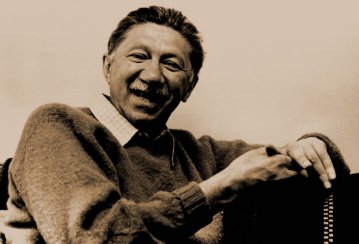 |
Saturday, 9 November 2013
Wisdom really does come with Age
Mood:
 chatty
Topic: Hypnosis & Psychology chatty
Topic: Hypnosis & Psychology

Wisdom really does come with age, scientists say. Although older people's brains slow down, experience and knowledge more than make up for it - helping them make better financial decisions, a study shows. It is the first time two types of intelligence - fluid and crystallised - have been tested among different age groups. Fluid intelligence is the ability to learn and process information while the latter refers to experience and accumulated knowledge. A series of economic tests found the older group of 163 participants aged 60 to 82 were better than the 173 younger counterparts of 18 to 29. This included 'temporal discounting' (how much people discount future gains and losses), loss aversion (how much the valuation of losses outweigh gains of the same magnitude), financial literacy (understanding financial information and decisions) and debt literacy (understanding debt contracts and interest rates). The older group exhibited greater patience and better financial and debt understanding. They were also somewhat less afraid of losses but the result did not reach standard levels of significance. The study, published in the journal Psychology and Ageing, said past research has found fluid intelligence declines with age but provides no definitive conclusion as to whether decision-making abilities sag. Dr Ye Li, of California University in Riverside, said: ‘The findings confirm our hypothesis that experience and acquired knowledge from a lifetime of decision making offset the declining ability to learn new information.’ Read more: dailymail.co.uk
Posted by Neil Bartlett DHyp M.A.E.P.H
at 00:01 CET
Updated: Saturday, 9 November 2013 01:02 CET
Wednesday, 9 October 2013
Hypnotist puts himself into trance for Surgery
Mood:
 a-ok
Topic: Hypnosis & Psychology a-ok
Topic: Hypnosis & Psychology

A brave patient stayed wide awake as a surgeon sawed through his ankle bone, after using HYPNOSIS to numb the pain. Trained hypnotherapist Alex Lenkei has gone under the knife without general anaesthetic an astonishing six times, saying he much prefers putting himself into a hypnotic trance to the traditional drugs used to bring about loss of consciousness. And during his most recent operation to replace an ankle joint, he even asked consultant orthopaedic surgeon Dominic Neilsen: "How's it going?" Mr Neilsen, who performed the surgery at Surrey's Epsom Hospital, admitted it was "nerve-wracking" make the first incision on a conscious patient. He said: "He did amazingly well with the whole thing. "To be honest, it was just like doing any other operation. Alex went through the process, which took a very short period of time, and he told us he was ready to go ahead. "It was then a case of getting on and doing the operation. It sort of went out of my mind that he was awake and able to correspond." As well as checking on the progress of his own surgery Mr Lenkei, 66, also commented on the noise the saw was making. "It was strange," said surgeon Mr Neilsen. "He just seemed to put himself into a trance and just lay there and didn't have any problems at all." An anaesthesiologist was on hand in case the hypnosis failed, but Mr Lenkei, who has been using self-hypnosis since the age of 17, said doctors had agreed to let him have the procedure without losing consciousness because he had a "track record". The six operations he has had without general anaesthesia include surgery on his hand, a hernia removal and freeing a trapped nerve near his elbow. He said: "I'm not averse to anaesthetic - it's just that my pain control is a hell of a lot better than the medical profession's and I heal a lot quicker because my body doesn't have to get rid of all the chemicals. Read More - mirror.co.uk
Posted by Neil Bartlett DHyp M.A.E.P.H
at 00:01 MEST
Updated: Wednesday, 9 October 2013 02:47 MEST
Friday, 13 September 2013
Abraham Maslow and the pyramid that beguiled business
Mood:
 chatty
Topic: Hypnosis & Psychology chatty
Topic: Hypnosis & Psychology

The psychologist Abraham Maslow's theory of human motivation is 70 years old but continues to have a strong influence on the world of business. What is it, and is it right? There is a commonly reproduced symbol which many believe holds the secret to personal fulfilment and business success. It usually takes the form of a triangle, but variants in the shape of 3D pyramids and staircases are not uncommon. It regularly appears in university psychology modules, and may pop up in other degree courses too. On management training courses it's as inevitable as biscuits and role-playing. In 1943, the US psychologist Abraham Maslow published a paper called A Theory of Human Motivation, in which he said that people had five sets of needs, which come in a particular order. As each level of needs is satisfied, the desire to fulfil the next set kicks in. First, we have the basic needs for bodily functioning - fulfilled by eating, drinking and going to the toilet. Maslow also included sexual needs in this group. Then there is the desire to be safe, and secure in the knowledge that those basic needs will be fulfilled in the future too. After that comes our need for love, friendship and company. At this stage, Maslow writes, the individual "may even forget that once, when he was hungry, he sneered at love". The next stage is all about social recognition, status and respect. And the final stage, represented as the topmost tip of the triangle, Maslow labelled with the psychologists' term "self-actualisation". It's about fulfilment - doing the thing that you were put on the planet to do. "A musician must make music, an artist must paint, a poet must write, if he is to be ultimately happy," wrote Maslow. "What a man can be, he must be." While there were no pyramids or triangles in the original paper, Maslow's hierarchy of needs is now usually illustrated with the symbol. And although the paper was written as pure psychology it has found its main application in management theory. Read More - BBC
Posted by Neil Bartlett DHyp M.A.E.P.H
at 00:01 MEST
Updated: Friday, 13 September 2013 02:13 MEST
Tuesday, 13 August 2013
Scientists discover why some people can't be hypnotised
Mood:
 chatty
Topic: Hypnosis & Psychology chatty
Topic: Hypnosis & Psychology

It is certainly one of the more mysterious medical treatments. But one question has always remained: why can some people be hypnotised and others can’t? The answer, it seems, may well lie with our decision-making ability. Scientists at Stanford University in the U.S. have discovered that people susceptible to hypnosis find it easier to make decisions and have better attention spans. On the other hand, those who are precise in their habits and make judgements quickly are less likely to succumb. The study was published in the October issue of Archives of General Psychiatry. Hypnosis is described as a trance-like state during which a person has a heightened focus and concentration. It has been used to help manage pain, control anxiety and combat phobias. It’s also increasingly being used to reduce conditions linked to stress, such as irritable bowel syndrome. But Dr David Spiegel, who led the research, says up to a quarter of people he sees cannot be hypnotised. To try and establish why, he scanned 12 people who were susceptible to hypnosis and 12 who were not. Dr Spiegel and his colleagues found no differences between the typical structures of the two groups' brains. But when they looked at the subjects' brains at rest, they noticed the brains of the easily hypnotised people behaved differently: they were most active in areas that decide what to focus on. Read more: dailymail.co.uk
Posted by Neil Bartlett DHyp M.A.E.P.H
at 00:01 MEST
Updated: Tuesday, 13 August 2013 01:17 MEST
Friday, 9 August 2013
Seven really effective ways to get unstuck
Mood:
 a-ok
Topic: Hypnosis & Psychology a-ok
Topic: Hypnosis & Psychology

by Mike Bundrant Getting stuck is nothing to worry about. It happens to us all. In fact, getting stuck mentally and emotionally is unavoidable. If you think you should never be at a loss for what to do or lack motivation in life, then your expectations are impossibly high. The real issue is how to get unstuck. It doesn't matter how often you get stuck if you have reliable methods for getting unstuck. The key to getting unstuck is changing your state of mind to one that is conducive to positive action. I hope the seven methods in this article add nicely to your repertoire. 1. Track backwards Trace your train of thoughts back to the last time you felt good and productive, then use that awareness to get unstuck. Example: You are feeling down and lethargic, unmotivated to do anything. You begin to think about the last time you felt good. This morning, right before you heard the news that gas prices were rising again, you felt OK. With the bad news, you began telling yourself that you will never be able to go on a road trip again, that this ruins everything and so on. Talking to yourself in a very discouraging tone creates very discouraging feelings. You realize what's been going on and STOP speaking to yourself this way. Soon, your mood lifts a bit! 2. Reach out to someone who can help you get unstuck Reach out to someone you trust and consider a resource. The key here is not to complain or burden the other person. Just tell them you feel stuck and why, then listen to their feedback. Ask them what they would do if they were in your situation. We all have great advice to give. Just feeling heard often helps. Connection with others is so important. We can be stuck just because we lack connection. 3. Accept that you are stuck Sometimes being stuck in unavoidable. It just needs to play out all on its own. Take this time to rest and ease up on yourself. Careful with this one, though! Taken too far, it can lead to self-indulgence. The idea here is that giving yourself a break may be just what you need. If you are too hard on yourself, setting yourself up with impossible expectations, you are bound to feel stuck. Relax and take it easy - even for a day. 4. Remember a really resourceful and productive time This is one of the classic NLP drills. To get unstuck, remember a time when you felt really resourceful - then step back into that time. See what you saw, hear what you heard and feel what you felt at the time. You cannot do this full without changing your inner state. When you feel your state change, then it is important to act on it! 5. Imagine a time in the future... Give yourself permission to be inspired by the potential of your personal future. Of course, the more realistic it seems to you, the better. Let your mind be free for a few minutes to dream about your plans coming to full fruition. Is this motivating? Can you use your positive future as a way to get unstuck? 6. Turn off your autopilot thinking Often we get stuck in a muddled mind that seems to be running on autopilot. It turns out that autopilot thinking is related to the brains Default Mode Network (DMN). Turning off the DMN is possible through a certain kind of awareness practice. Try this: Write down every stray thought going through your head for at least a minute. Then, tune into a mundane, white noise kind of sound. The sound of a fan, the refrigerator, or distant traffic will do. Just tune in and listen. Do you feel yourself settle after 10-15 seconds? Then, write down what you need to do and get moving again. By the way, if you experience the potential of this method, then the Tame the DMN program will do wonders for you. 7. Kick and scream... If all else fails, let your emotions out! You MUST do this in a totally responsible way, never infringing upon another person's space or making a nuisance of yourself. Hop on your bed or the couch, lie down, kick and scream. Let it out and get your psychic energy moving! It will absolutely change your state. Some of the greatest psychotherapists, such as Willhelm Reich, used this kind of method to stir the emotional pot and get life energy pumping again. Learn more: naturalnews.com
Posted by Neil Bartlett DHyp M.A.E.P.H
at 00:01 MEST
Updated: Friday, 9 August 2013 01:35 MEST
Saturday, 13 July 2013
Studies reveal the effectiveness of medical Hypnosis
Mood:
 happy
Topic: Hypnosis & Psychology happy
Topic: Hypnosis & Psychology

The validity of therapeutic hypnosis as a complementary modality is becoming recognized, as studies prove brainwave activity changes with hypnotic depth. As we move from the high-energy beta wave state to the slower theta waves, we experience perceptual and physiological changes; for example our eyes flutter, breathing is more rhythmic, the body is relaxed and time is distorted. Interestingly, children and animals tend to reside in the alpha/theta waves, thus are more intuitive and emotional. According to Crawford, a prominent researcher in the hypnotic field, different parts of the brain are activated during hypnosis - some increasing from 13%-28%. Preliminary results also suggest the reward pathway in the brain involving dopamine is stimulated. In fact, research using fMRI shows that hypnosis requires more mental effort, hence individuals are in a heightened state of awareness. The power of hypnosis coupled with suggestion changes belief systems by reframing the meaning we place on experience. William Tiller, a former Professor Emeritus at Stanford University aptly states, "What we give meaning to we become." Studies on the effects of hypnotherapy abound, for example, those tested positive for tuberculosis using the Mantoux test method were able to inhibit the test reaction following hypnotic suggestion. Interestingly, the use of cooling images for burn victims greatly increased speed of recovery. Hypnotic suggestions given pre and post surgery reduced the need for excessive anesthesia and medication. This clearly shows that hypnosis has a neuropsychoimmunological effect on the individual; highlighting its versatility, encompassing far more than it's traditional uses for habit management, fears and weight loss. So what allows us to delve into this part of ourselves? Consciousness is defined as awareness. How many of us are completely aware of every waking moment? Quantum physics suggests that we are the creator of our own realities; it is our expectations and intention that creates the space around us. Indeed, William Tiller has researched the effects of intention on experimental outcome. In one study he demonstrated it was possible to repeatedly alter the acidity or alkalinity of water using intention. If this is evident with water what does this mean for the human body? We are 70% water after all! This finding should have you on the edge of your seat, for it tells us that we are more powerful than our beliefs suggest and we significantly impact our lives and those around us. We do not live in a vacuum rather we are entangled one mind with another on a quantum level. Moreover, our emotional minds and physical bodies are tightly intertwined, thus we are co-creators not victims. Society conditions us to believe ego is our true essence. This conditioning builds our expectations and belief system based on illusion. Consciousness is the beauty of being human. It's what gives the matter of which we are made the innate intelligence to create. Furthermore, consciousness is found in the animal, plant and microbial kingdom albeit at differing levels. So if our cells have consciousness what information can we tap into using hypnosis? Consciousness is the energetic thread of our existence. Hypnosis therefore is the gateway to finding our authentic selves. Learn more: naturalnews.com
Posted by Neil Bartlett DHyp M.A.E.P.H
at 00:01 MEST
Updated: Saturday, 13 July 2013 02:15 MEST
Thursday, 4 July 2013
Out-of-body virtual scenarios may help social anxiety
Mood:
 chatty
Topic: Hypnosis & Psychology chatty
Topic: Hypnosis & Psychology

People suffering from social anxiety could be helped to overcome their fears by viewing themselves taking part in virtual scenarios, research from the University of East Anglia suggests. New imaging technology allowed six participants to rehearse their behaviour in a range of social settings. They were able to practise small talk and maintain eye contact, for example. Researchers said it could be used with cognitive behavioural therapy. UEA researchers created more than 100 different virtual scenarios, such as using public transport, buying a drink at a bar, socialising at a party, shopping, and talking to a stranger in an art gallery. They then asked six young men recovering from psychosis who also have debilitating social anxiety to take part in the video scenes. The participants were able to see their own life-size image projected onto a real-time video scene while experiencing social interaction. Practice makes perfect Dr Lina Gega, of the university's Norwich Medical School, said: "People with social anxiety are afraid that they will draw attention to themselves and be negatively judged by others in social situations. "Many will either avoid public places and social gatherings altogether, or use safety behaviours to cope, such as not making eye contact. "Paradoxically, this sort of behaviour draws attention to people with social anxiety and feeds into their beliefs that they don't fit in. Read More - BBC
Posted by Neil Bartlett DHyp M.A.E.P.H
at 00:01 MEST
Updated: Thursday, 4 July 2013 01:55 MEST
Monday, 24 June 2013
Dim Lighting Sparks Creativity
Mood:
 chatty
Topic: Hypnosis & Psychology chatty
Topic: Hypnosis & Psychology

There are certain times when you want the lights turned way down low. One such time, according to recent research, is when you need to think creatively. “Darkness increases freedom from constraints, which in turn promotes creativity,” report Anna Steidle of the University of Stuttgart and Lioba Werth of the University of Hohenheim. A dimly lit environment, they explain in the Journal of Environmental Psychology, “elicits a feeling of freedom, self-determination, and reduced inhibition,” all of which encourage innovative thinking. Steidle and Werth describe six experiments which provide evidence for their thesis. The key one featured 114 German undergraduates, who were seated in groups of two or three in a small room designed to simulate an office. The room was lit by a fixture hanging from the ceiling directly above the desk. The amount of illumination varied, with some groups receiving only 150 lux (dim light), others 500 lux (the recommended lighting level for an office), and still others 1,500 lux (bright light). After acclimating themselves for approximately 15 minutes, participants went to work on what the researchers describe as “four creative insight problems typically used in creativity research. These tasks require that individuals change their perceptions of a given problem in order to find the optimal solution.” After spending two minutes attempting to solve each problem, participants rated how free from constraints they felt. They noted the degree to which they felt externally controlled, and reported their level of self-assurance. The results: Those in the dimly lit room solved significantly more problems correctly than those in the brightly lit room. They also felt freer and less inhibited than their intensely illuminated counterparts. Participants in the bright and the conventionally lit rooms did not differ significantly from one another on either scale. “These results indicate that dim illumination heightens perceived freedom from constraints, which in turn improves creative performance,” the researchers conclude. Don’t have a dimmer switch at your desk? No worries. Other experiments found that merely priming the idea of darkness—such as by taking five minutes to describe an experience of literally being in the dark, and recalling how it felt—was sufficient to boost creativity. Read More - psmag.com
Posted by Neil Bartlett DHyp M.A.E.P.H
at 00:01 MEST
Updated: Monday, 24 June 2013 02:21 MEST
Wednesday, 5 June 2013
Pareidolia: Why we see faces in hills, the Moon and toasties
Mood:
 cheeky
Topic: Hypnosis & Psychology cheeky
Topic: Hypnosis & Psychology

People have long seen faces in the Moon, in oddly-shaped vegetables and even burnt toast, but a Berlin-based group is scouring the planet via satellite imagery for human-like features. What's behind our desire to see faces in our surroundings, asks Lauren Everitt. Most people have never heard of pareidolia. But nearly everyone has experienced it. Anyone who has looked at the Moon and spotted two eyes, a nose and a mouth has felt the pull of pareidolia. It's "the imagined perception of a pattern or meaning where it does not actually exist", according to the World English Dictionary. It's picking a face out of a knotted tree trunk or finding zoo animals in the clouds. German design studio Onformative is undertaking perhaps the world's largest and most systematic search for pareidolia. Their Google Faces programme will spend the next few months sniffing out face-like shapes in Google Maps. Google Faces will scan the entire globe several times over from different angles. So far the programme has pinpointed an eerie profile in Russia's remote Magadan region, a fellow with hairy nostrils next to Priory Road in Ashford, Kent, and a mangy creature in the mountains of Alaska, among others. Read More - BBC
Posted by Neil Bartlett DHyp M.A.E.P.H
at 00:01 MEST
Updated: Wednesday, 5 June 2013 01:46 MEST
Wednesday, 22 May 2013
The Art of Slowing Down
Mood:
 happy
Topic: Hypnosis & Psychology happy
Topic: Hypnosis & Psychology

One key to taking care of ourselves lies in learning how to slow down. I have a friend who’s in the middle of a well-deserved sabbatical. These months represent the first chance she’s had in two decades to unwind a bit as a working, single mom. “It’s just incredible,” she remarked, “having time to exercise and read and cook meals and walk outside—it’s really unbelievable.” “I’m curious,” I asked her. “What’s the best part: the exercising, the reading, the cooking, or the walking?” Without hesitation she replied, “Just having time—that’s all. I’ve never gotten to slow down before and it’s liberating.” Although few of us are graced with the chance to have a sabbatical, most of us could greatly benefit from the opportunity to have more space and time in life so that slowing down could be an option. We live in a culture of speed, and although I’ve always known this, it became especially apparent to me several years ago when I traveled to Bali. Within the first day of being there, I found myself awestruck by the Balinese pace of life. I watched them as though they were some rare species, feeling puzzled by the sight of humans moving without rushing. I had never seen people engage in daily tasks without a sense of needing to get on to the next thing. It also became apparent that they didn’t seem to worry in nearly the way I was accustomed to seeing. As opposed to holding tension in their bodies, they carried a quality of lightness and a radiant smile. I commented to a Balinese priest about how people in our country tend to pray, and then worry, and then continue rushing in response to their worry—but people in their country seem to just pray. He confirmed my sense that they actually trust in their prayers. I realize that my fascination with the Balinese lack of rushing and worrying is based on my own life story. From a young age, my mind has known how to worry and my body has known how to rush with impeccable skill and familiarity. I would say that I was born with these abilities, but I know that technically this isn’t possible. Maybe it’s more fair to say that somewhere between my first breath and the time I graduated from elementary school these ways of being had become second nature. I could perform them with the ease of a rodeo cowboy spinning his lasso in all directions and with the automatic reflex of a short-order cook flipping dozens of burgers on a grill. My successes at speed were rewarded from a young age: setting records in the 50-yard dash and bringing home certificates that boasted of how many times I could jump rope in ten minutes. I excelled at speed reading and quickly learned that the faster I got homework done, well, the faster it got done. Even while being on vacation in Bali, having no need to be in a hurry, I found myself still feeling like a rusher in contrast to these people. Our first night out to dinner, as we were finishing our desserts, my husband asked for the check. Our waiter paused and turned to us with a puzzled look on his face. “Why you in such a hurry?” My first thought was, Because, sir, this is what my people do. But instead of speaking these words, I shrugged my shoulders and half-motioned to our children as though they were the root cause. I realized how adamant I was to protect the Balinese pace of life as we were driving to the airport to leave the island. We passed a billboard for McDonald’s that read: “Buru Buru?” and showed a picture of a cheeseburger. The presence of the restaurant, alone, felt wrong to me, but then I made the mistake of asking our taxi driver, “What does buru buru mean?” “Ahh,” he said, “it means ‘in a hurry.’” I screamed, “No!” so loudly that I startled him. “Don’t let them take over your land. No buru buru . . . resist the buru buru!” I realize that my passionate outcry came from knowing the sort of suffering that comes from rushing and experiencing how hard it is to convert to being a nonrusher once the art of moving quickly has been perfected. For me, it’s an ongoing journey of catching myself when I’m moving too fast. Many people come to my counseling office because they feel overwhelmed by the rushed pace of life. Often, their eyes well up with tears as they sit down on my sofa, simply because they have a rare chance to slow down and be present with themselves. Whenever I leave people alone for a minute or two as I’m getting them a cup of tea, their response is even more notable when I return. Along with the arrival of tears, there’s an arrival of wisdom. It’s almost uncanny the level of clarity that emerges from simply sitting down for several minutes . . . As you enter this New Year, may you find time to slow down, listen to your own wisdom, and reconnect with what matters most in your life. by Karen Horneffer-Ginter, Ph.D Source - dailygood.org
Posted by Neil Bartlett DHyp M.A.E.P.H
at 00:01 MEST
Updated: Wednesday, 22 May 2013 02:00 MEST
Newer | Latest | Older
|
|











